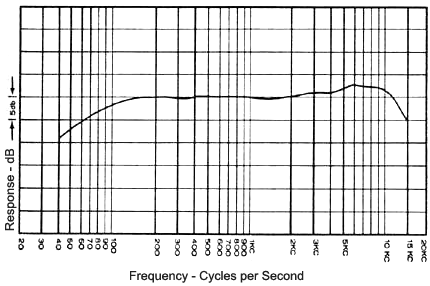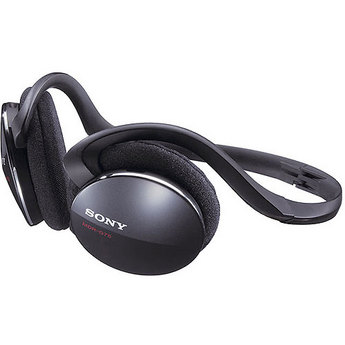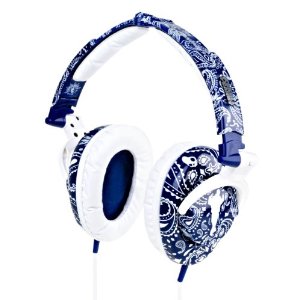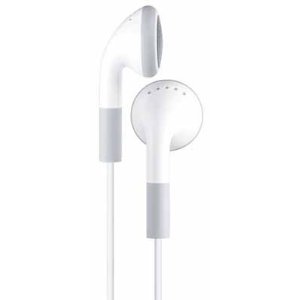Tune Up: Consumer Headphones
posted in: Features • Reviews & Playlists
 A couple of weeks ago, we wrote a few reviews on some headphone options for when you want to work and mix in the studio. The topic, however, is not applicable to the majority of the market. Most people shopping for headphones are looking for great quality sound and physical comfort so that they can enjoy listening to their favorite music. This week I’ll talk about some of the designs and technologies behind headphones created specifically for enjoying music rather than creating it.
A couple of weeks ago, we wrote a few reviews on some headphone options for when you want to work and mix in the studio. The topic, however, is not applicable to the majority of the market. Most people shopping for headphones are looking for great quality sound and physical comfort so that they can enjoy listening to their favorite music. This week I’ll talk about some of the designs and technologies behind headphones created specifically for enjoying music rather than creating it.
Design:
While it may seem obvious, there are several standard designs to look for when purchasing headphones, and they all have their own applications. There are three basic construction methods here: Ear buds, on-the-ear and over-the-ear. This may all seem straight forward, but there are some distinct concepts to keep in mind.
Ear buds, as a general rule are quite directional. That is to say, while the speakers are small and aren’t that loud, they are placed inside the ear directly toward the ear drum. Everyone is familiar with ear buds because they are the standard headphones that come with an iPod. Their spec’s? They may sound familiar:
Frequency Range: 20-20,000 Hz
Impedance: 32 Ohms

A Typical Microphone Response Curve, Similar to Headphone Response curves
These spec’s match the Ultrasone studio monitors we mentioned in the Studio Headphones post. Of course, their lack is the shape of their frequency response curve as well as construction. A frequency response curve is a graph that indicates how loud a headphone puts sound out across its frequency spectrum (An example is pictured at right). The iPod ear buds have small drivers that are designed to have a healthy mid spectrum with some odd dips/boosts on the lower end. They are, however, quite convenient and are a staple for “workout” headphones or just for listening to your iPod. Keep in mind that there are many brands that offer an even more direct ear bud design by going further into the ear (often called “in-ear headphones”).
Disclaimer: Please be wary of the amount that you use your ear buds. Because the sound is so direct and placed so close to your ear drum, you don’t need to play music very loud to create damaging effects (a diluted version of that “ringing,” clogged feeling you get after a loud concert) on your hearing . When at all possible, listen to music on speakers or with on/over-the-ear phones.
 On-the-ear headphones are the most nostalgic for me. You may recall the sets that came with old Walkman CD or tape players. They are foam-covered speakers that are placed on your ear, right outside of it. This is a great alternative for those who have trouble wearing buds (whether they don’t fit or are just uncomfortable). We’ll go with a favorite style, the behind-the-head variety.
On-the-ear headphones are the most nostalgic for me. You may recall the sets that came with old Walkman CD or tape players. They are foam-covered speakers that are placed on your ear, right outside of it. This is a great alternative for those who have trouble wearing buds (whether they don’t fit or are just uncomfortable). We’ll go with a favorite style, the behind-the-head variety.
Frequency Range: 12-24,000 Hz
Sensitivity: 106 dB
The manufacturer of these doesn’t specify impedance but the sensitivity is adequate. Also, the frequency range is very large on these. I can’t say it’s the deciding factor for a purchase, but it’s good to know.
 Finally, for the ideal listening situation, We would recommend a high-quality pair of over-the-ear listening headphones. The difference between this type and a pair of studio over-the-ear is that the goal is to maximize the sound of the song for listening purposes. Therefore, these phones will never have a really flat response, and will theoretically be designed to boost/cut certain frequencies for the best sound. For the most affordable vs. highest quality, we recommend checking out Skull Candy headphones. The brand is somewhat new, but it offers every variety discussed here. They have so many varieties and technologies that it’s almost pointless to give you one set of spec’s. So, check them out and pick the right ones for you. Note: They come in all different types of colors and styles, a nice perk for the style-conscious.
Finally, for the ideal listening situation, We would recommend a high-quality pair of over-the-ear listening headphones. The difference between this type and a pair of studio over-the-ear is that the goal is to maximize the sound of the song for listening purposes. Therefore, these phones will never have a really flat response, and will theoretically be designed to boost/cut certain frequencies for the best sound. For the most affordable vs. highest quality, we recommend checking out Skull Candy headphones. The brand is somewhat new, but it offers every variety discussed here. They have so many varieties and technologies that it’s almost pointless to give you one set of spec’s. So, check them out and pick the right ones for you. Note: They come in all different types of colors and styles, a nice perk for the style-conscious.
Technologies:
We’ll end this post with a quick mention of a couple of important, innovative technologies that headphones use. Hopefully this will help you determine what type is best for you. One of the best innovations is noise-cancelling technology. Not to be confused with noise-reducing (where the headphones simply block outside noise), “noise-canceling” actually requires power to put out a small amount of noise/interference to cancel out what you hear as noise outside the headphones. We’ll break it down. First, the headphones detect what low-level noise wave forms exist naturally. Then, the headphones produce an equally loud set of noise that is opposite in phase to the outside noise, thus canceling it out. Think about adding a positive number and a negative number of equal values. You get zero. Canceling noise works the same way. Try it out in a room with a loud air conditioner or something. First put the phones on without the NC activated. Then turn it on. You’ll get the strange sensation of the noise going away, giving your ears near silence!
 Let us briefly mention wireless technology and modeled surround sound. While these require much research and testing, they are pretty self-explanatory. Wireless headpohnes transfer sound from the music player to the headphones via radio waves (just like a wireless guitar system). Of course, this allows you to listen to music without being encumbered by a wire. Modeled surround sound uses subtle panning and amplitude shifts from left to right to make it seem as if you’re listening to the music in a theater or with a home theater surround system. The Ultrasone headphones mentioned a few weeks ago feature this technology. They are particularly great when watching movies or playing video games, giving you that immersive experience.
Let us briefly mention wireless technology and modeled surround sound. While these require much research and testing, they are pretty self-explanatory. Wireless headpohnes transfer sound from the music player to the headphones via radio waves (just like a wireless guitar system). Of course, this allows you to listen to music without being encumbered by a wire. Modeled surround sound uses subtle panning and amplitude shifts from left to right to make it seem as if you’re listening to the music in a theater or with a home theater surround system. The Ultrasone headphones mentioned a few weeks ago feature this technology. They are particularly great when watching movies or playing video games, giving you that immersive experience.
We hope we’ve given you some information and, perhaps, the confidence to pick out your headphones out without needing to spend hours in your favorite store. Unless, of course, you’re like us and you do that anyway.
